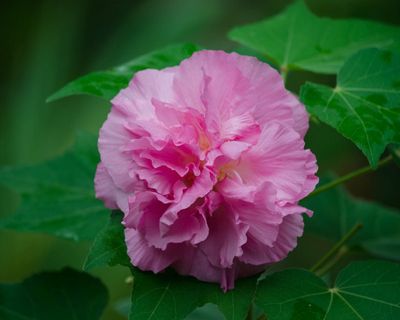Hibiscus Plant Varieties
The name hibiscus actually covers a wide range of plant types, including both perennials and annuals, shrubs, and tropical flowering plants. Hibiscus is most often chosen by gardeners for the pretty blossoms they produce, but they are also used because certain varieties grow quickly and provide hardy greenery. Zone 7 hibiscus options generally include the hardy outdoor perennial varieties, not the annuals.
Hibiscus Plants for Zone 7
If you live in zone 7, which covers parts of the Pacific Northwest and California, Nevada, Utah, Arizona, New Mexico, northern Texas, Tennessee, Virginia, and the upper portion of North Carolina, you can grow hardy perennial varieties of hibiscus in the garden. These varieties grow quickly, will tolerate the colder temperatures, and produce abundant flowers: Rose-of-Sharon (Hibiscus syriacus) – This is a popular shrub in many colder regions, not just zone 7. Rose-of-Sharon is hardy, grows fast, leafs late in spring, and produces white, pink, or pale lavender blooms in mid-summer. Rose Mallow (H. moscheutos) – Many of the perennial varieties of cold hardy hibiscus are named as some variation of mallow. This one is popular for the enormous flowers it produces, up to 12 inches (30.5 cm.) across, which is why the plant is sometimes called dinner plate hibiscus. Rose mallow has been bred extensively to produce a number of cultivars in a variety of leaf and flower colors. Scarlet Swamp Rose Mallow (H. coccineus) – Sometimes called scarlet swamp hibiscus, this variety produces beautiful, deep red flowers up to eight inches (20.5 cm.) across. It grows naturally in swamps and prefers full sun and moist soil. Confederate Rose (H. mutabilis) – Confederate rose grows very tall in southern regions, but where there are winter freezes, it is limited to about eight feet (2.5 m.) tall. One color form produces white flowers that change into dark pink over the course of a day. Most confederate rose plants produce double flowers. Hibiscus plant varieties that are cold hardy enough for zone 7 are easy to grow. They can be started from seed and start producing flowers in the first year. They grow quickly and without much intervention needed. Pruning and removing dead flowers can encourage even more growth and blooms.
